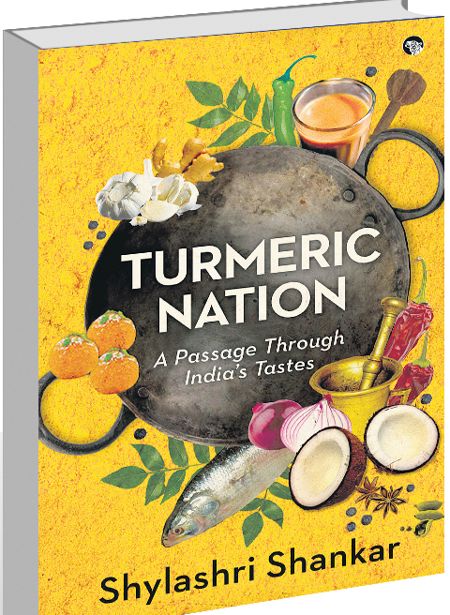Turmeric Nation: A Passage Through India’s Tastes; by Shylashri Shankar, Speaking Tiger, Pages 336, Rs 499
Book Title: Turmeric Nation: A Passage Through India’s Tastes
Author: Shylashri Shankar
Sarika Sharma
‘Turmeric Nation’. The title of Shylashri Shankar’s latest book encapsulates within itself centuries of flavours and centuries of feuds, centuries of wisdom and centuries of marginalisation, all with food at the centre.
The lengths and breadths of this huge landmass called India are so flavourful and so diverse, one wonders how can political interests try to bind it in narrow ideas of nation and nationalism. As Shankar, a senior fellow at the Centre for Policy Research, takes on the daunting task of defining Indian food, she brings in the worldview, citing scholars, food historians, writers, critics, anthropologists and philosophers from all over the world and India to study foods, understand the science of their flavours and the politics behind them.

In her essays delving into geography, history, myth, sociology, film, literature and personal experience, she underlines that while frictions over food around the world are about ideology, here in India they entwine with religion. “The conflict is simply not about the right to eat beef; it is an ongoing struggle to define the identity of who gets to be called an Indian and who does not, and who get to decide the issue.” And the fight within India is not just with other religions, but within Hindu castes too. The “Hindu mode of thinking” collides with both ancient (Vedic) and Dalit practices of non-vegetarianism.
Shankar notes that the idea all this while has been to assert power and further ideas towards a desired cause. If nationalists propagated different food ideas and introduced taboos as per their roadmap to a modern India, the middle class in South India took to drinking coffee to maintain a distance from lower classes and castes.
The most wretched in this hierarchy have been Dalits from the Hindi belt. Shankar says there is no other season for Dalit weddings than summer when foodgrains are in abundance. And a prime criterion for weddings — “Do they use turmeric the whole year?” Turmeric, it turns out, is too expensive a commodity, something they indulge in occasionally. And if foraging is fashionable in the West, it is about the absence of choice in UP villages where a Dalit has to fight with birds for fruits, bludgeon field rats for dinner and joothan and rotten food are part of life. Amid all this, what is Indian food? Shankar’s 336-page book offers more than enough to ponder over that.














